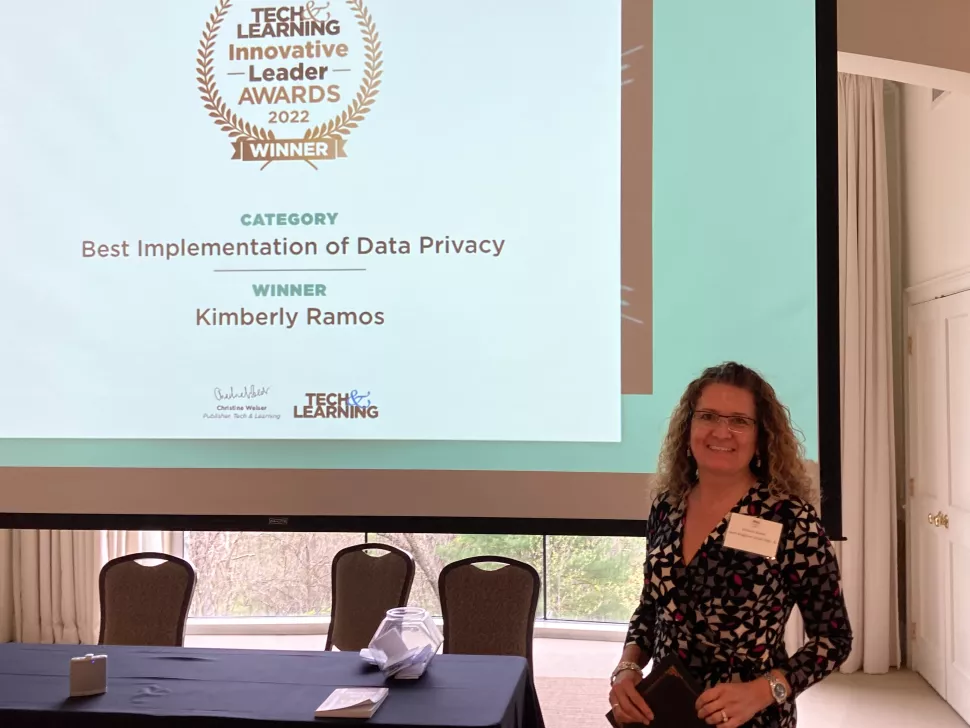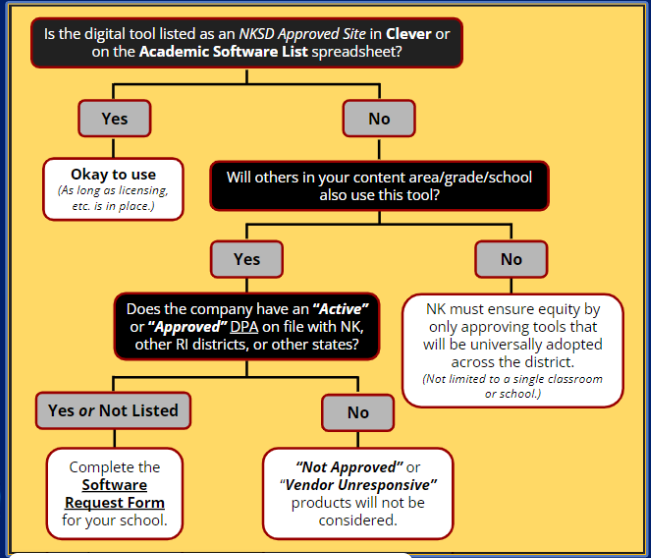Vetting Tech Tools
Creating clear systems for tech tool approval in your district is important, says Kimberly Ramos, instructional coach at the North Kingstown School Department in Rhode Island.

The early days of the pandemic ushered in a Wild West era for student digital privacy. Scores of online platforms started offering products for free and it was not always clear how student data would be handled.
Kimberly Ramos, a technology instructional coach at the North Kingstown School Department in Rhode Island, realized early on this could be a problem. Working with the district’s IT director and systems administration, she helped form a student data privacy plan to establish effective systems for vetting new tech tools and fielding requests from educators to use others.
For these efforts and others, Ramos was recognized with an Innovative Leader Award for Best Implementation of Data Privacy during Tech & Learning’s recent Northeast Regional Leadership Summit.
From her experiences, Ramos has developed tips and best practices for vetting digital tools.
Standardizing the Process

To protect student data, Ramos and colleagues implemented a vetting process that asks several key questions about each new tech tool, including whether the tool is of high instructional quality, whether it is in compliance with state and federal data laws, and if there is an approved budget to pay for it. The district also partners with other districts on a standard student data privacy agreement that many tech companies have already signed.
“We also have an approval process that we created for teachers who really want to stick with something that they were using before, or something that they found,” Ramos says. (See workflow graphic the district uses below
Educators can request a new tool through a Google form and then Ramos or a member of her team will work with them on answering questions about the new technology, including whether there is a privacy agreement with the company on file and how the tool will be utilized. For example, teachers will be asked, “Are other people in your grade, or your content area, going to use it, or are you the only one?” Ramos says, adding equity is also a point of emphasis. “If you're in fifth grade in one school, and then you go to fifth grade in another school, they should be using the same tools and platforms, so that everybody has a similar experience.”
Tools and ideas to transform education. Sign up below.

The Vetting Process Should be Ongoing
School leaders should also understand that the vetting process for tech tools is ongoing and the usage of these tools should constantly be evaluated for educational efficacy. During summer break Ramos analyzes the data surrounding each app the district uses. “For example, ‘Alright well, we had licenses for 4,000 kids, how many are actually using it this year?’ So the data will tell us if it's worth purchasing again,” she says.
The data can also help answer questions about which groups of students should get licenses. “Is it just a middle school and high school thing? Or is it just an elementary school thing?” she says.
Getting Teacher Buy-In
When rolling out new vetting tools for digital technology it’s important to get teachers to understand the need for such vetting. “Don't be heavy-handed about it,” Ramos advises. “You need to give the ‘why’ as well as the ‘what.’”
Taking a personal approach can also help. “Rather than just sending an email, setting a deadline, and saying, ‘Okay, this is what's happening,’ I like to go to faculty meetings in every building,” Ramos says.
She’ll work with teachers during planning time and offer to help as much as she can. In addition to sending instructions, she’ll offer one-on-one meetings with teachers or to come to classrooms to work with them and their students. “I think being approachable and being flexible are the keys to that, and just making sure that people know that there's a bigger reason behind this,” Ramos says. “We're not doing this to be difficult, we're doing this because we need to protect our students.”
Erik Ofgang is a Tech & Learning contributor. A journalist, author and educator, his work has appeared in The New York Times, the Washington Post, the Smithsonian, The Atlantic, and Associated Press. He currently teaches at Western Connecticut State University’s MFA program. While a staff writer at Connecticut Magazine he won a Society of Professional Journalism Award for his education reporting. He is interested in how humans learn and how technology can make that more effective.

